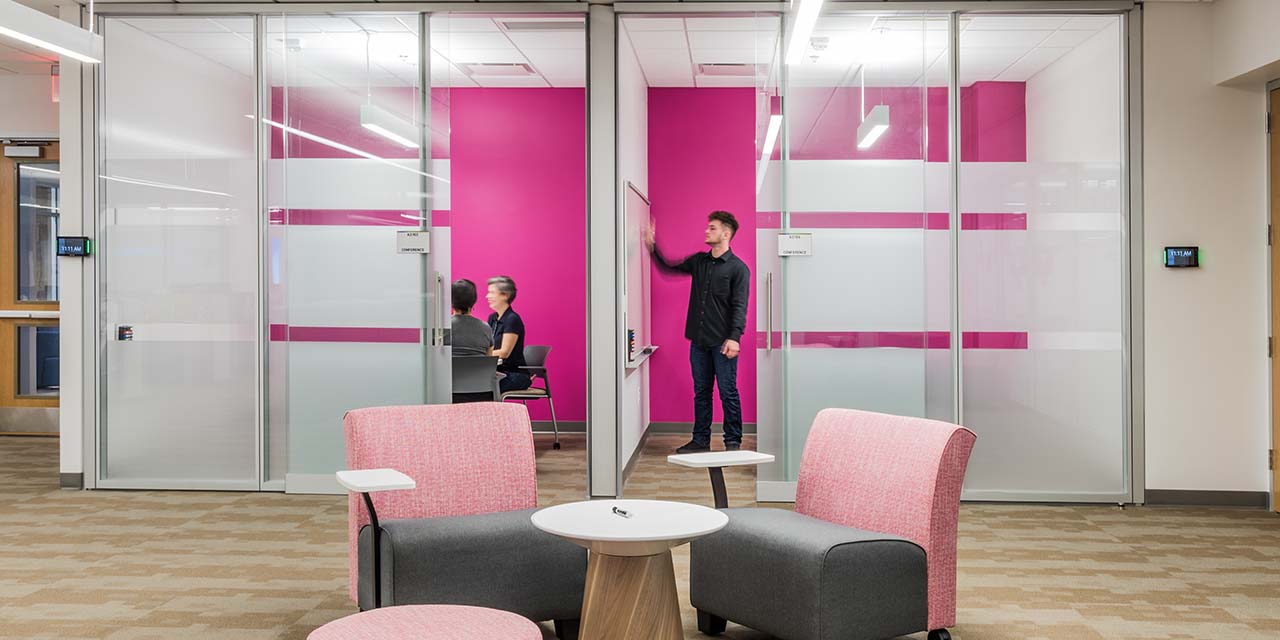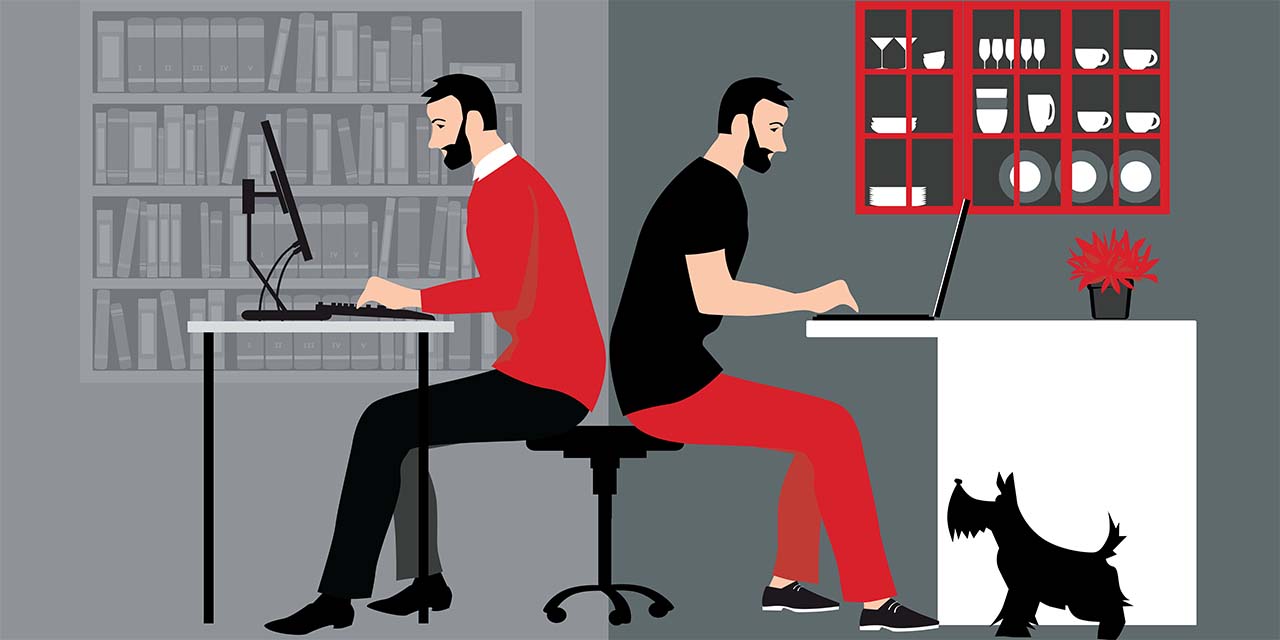DISCOVERING THE
NEW HYBRID WORK MODEL
Is this adaptive, post-pandemic work model the right choice for your organization? (Part I)
February 28, 2022
For many organizations, the two-year experiment with remote work is over – but not for all. In fact, many adopted hybrid work models, where a combination of in-person and remote work merge seamlessly to meet business goals and maximize productivity. How can you assess if this post-pandemic paradigm is right for your organization? In Part I of this two-part series, we provide an overview of what a hybrid work model entails and how to assess if the flexibility and adaptability it offers can enhance your productivity.
What are hybrid work models?
In general, a hybrid work model includes desk space at physical office locations and the technology and equipment for employees to work remotely from home or outside the office. Not all desk space may be assigned either. There may be community desk space (often referred to as hotel space) or standing desks for employees to use as needed.
A hybrid work model balances in-person and remote work and incorporates them into an organization’s processes. What this balance looks like will certainly depend on your organization’s culture. It likely won’t be a 50-50 balance. For example, an organization that collaborates often may need more employees working in person than at home.
Most importantly, hybrid work models focus more on getting your tasks done and less on how or when. They provide an adaptive workplace that responds to the way employees work.
In its 2020 State of Remote Work report, Owl Labs – a leader in video conferencing and classroom technology – found that 72% of U.S. employees want to work remotely because it offers a better work-life balance. In fact, 70% cited increased productivity and better focus.
A Deloitte study revealed that employee engagement tends to be highest among remote workers 60-80% of the time. A 2018 Gallup poll found that teams with high employee engagement are 21% more productive.

Hybrid work model in action: An office layout with hoteling stations and lockers for staff visiting the office to store their belongings
How does a hybrid work model look in the real world?
An organization can introduce a hybrid work model in different ways.
- A/B schedule. Some employees work at the office on “A” days and others on “B” days
- Office visits as needed. Employees visit the office only to complete specific tasks, collaborate, or escape their virtual work life
- Work from anywhere. Employees can work at the office, but remote options are available (laptop, VPN) for certain circumstances, such as travel
Are there any downsides to hybrid work models?
We’ve briefly covered some of the pros of remote work. However, it does have downsides. As social beings, humans need to connect and communicate with other humans. For employees, some of the biggest challenges associated with remote work are loneliness and communication. They can also struggle with onboarding, developing relationships with their coworkers, and feeling connected to their organization and its goals. Younger employees may lack mentorship and leadership opportunities.
According to the Society for Human Resource Management (SHRM), organizations may not want to adopt a hybrid work model because:
- They haven’t properly trained their employees to work remotely
- Supervisors aren’t trained to manage employees remotely
- Supervisors aren’t comfortable with their employees working offsite
- Their remote workers aren’t as productive working remotely
Some organizations may also lack the technology to support remote work.
Next step: How you can assess whether a hybrid work model is right for your organization
The reasons why organizations consider hybrid work models vary by region. But in Texas, we often see these three scenarios when organizations start considering a hybrid work model:
- The lease is up. Organizations now – more than ever – are wondering if they need the same amount of real estate as they did before the pandemic. A hybrid work model can allow your organization to reduce its physical footprint and save costs in the long run.
- A shift in corporate culture looms. One of our clients planned to adopt a hybrid work model (primarily a remote one) before the pandemic began. Why? It aligned best with their vision for the future. You may have noticed a change in your own culture over the past two years that could mesh better with a hybrid work model.
- Growth. If profits and workload increased over the past two years, you might need more employees. Remote work widens the talent pool, giving you new-found access to top performers across the nation (or globe, even).
Whether you find yourself in one of the above situations or an entirely different one, follow these three steps to assess whether a hybrid work model is right for you.

A good assessment will take note of spaces your employees need to complete their tasks, such as breakout rooms and huddle space (above)
Step 1: Ask yourself the tough questions
You need a firm grasp on your long-term business goals, productivity, current technology, and employee capabilities. You may ask yourself:
- Have we been meeting our business goals?
- Will a hybrid work model help us achieve our goals in the long term?
- How do we want to be in the future?
- Did productivity increase, decrease, or stay the same while our employees worked remotely? (Determine a metric by which you measure productivity)
- Do we have the technology to support remote work long-term for both new and existing employees? If not, are we ready to invest in technology that enables remote work?
- Are our internal teams capable of working from anywhere?
- If we acquire new employees under a hybrid model, how will we integrate them into existing teams and our culture?
Step 2: Interview your staff and organize the information by departments (or other relevant categories)
In addition to asking yourself questions about your business and culture, you need to understand the space requirements each employee and department needs, whether they’re working from home or at the office. This includes the number of square feet they need to operate successfully, the type of equipment they need within the space they use, and whom they need to interact with to accomplish their tasks.
Step 3: Analyze the results
So, now you have your data. The results of your interviews should tell you the amount and type of spaces your employees need. This is your starting point when you switch to a hybrid work model. Add up the square footage requirements, take an inventory of required equipment, and create a diagram for how your departments interact with each other.
Once you collect the data and look at the big picture, you can decide which changes (if any) to implement at your workplace. We cover what these changes might look like in Part II (coming soon).

About the Author
Laura Syth
Laura first joined the A/E/C industry in 2013. With a background in government, senior living, and hospitality design, her service-driven design approach focuses on improving her clients’ experience and developing personalized solutions for their needs. Her professional involvement includes the International Interior Design Association (IIDA) and the Urban Land Institute (ULI).
